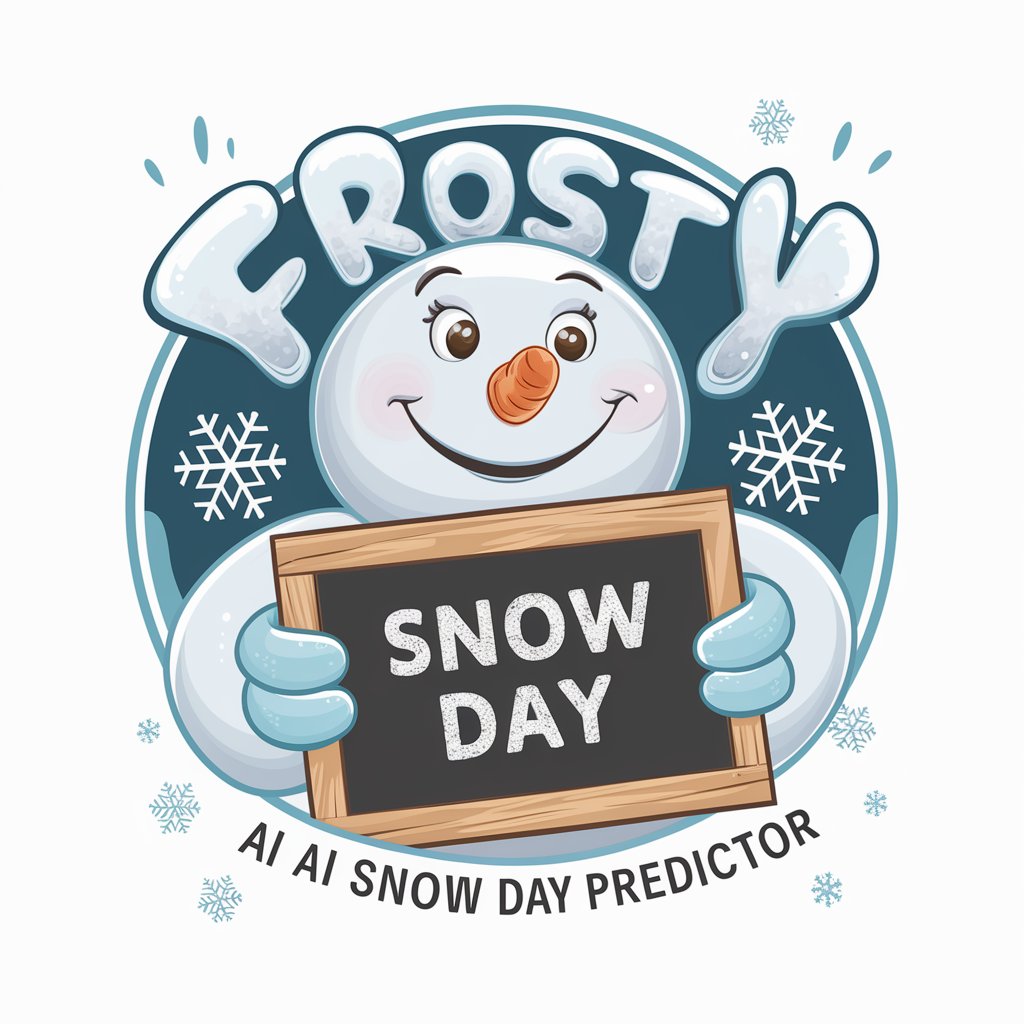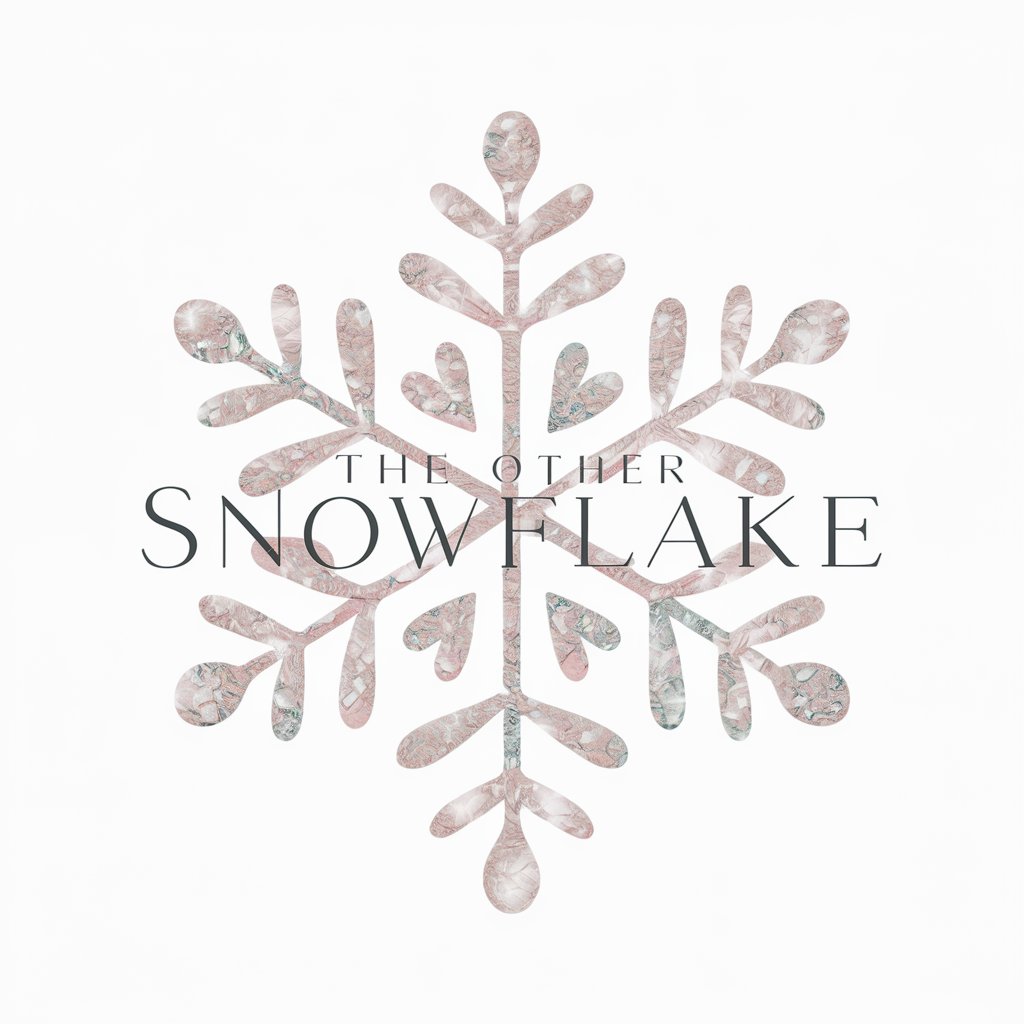
Frosty - Snow Day Prediction Tool

Hi there! Ready to check the snowy forecast?
Predicting snow days with AI precision.
Alright, let's check out the snowy situation in
Get ready for some winter weather updates for
Wondering about a snow day in
Here's the latest snow forecast for
Get Embed Code
Introduction to Frosty
Frosty is a specialized AI designed to provide accurate and timely snow day predictions, primarily focusing on the likelihood of school closures due to snow events. Equipped with capabilities to analyze weather data, Frosty offers forecasts that include temperature, snow accumulation, and potential disruptions like blizzards or driving bans. A typical use case involves Frosty generating detailed weather predictions which help users anticipate and prepare for snow days. For example, Frosty can analyze weather patterns to predict significant snowfall in a specific region, helping schools and parents plan accordingly. Powered by ChatGPT-4o。

Main Functions of Frosty
Snow Day Predictions
Example
Predicting up to 5 inches of snow overnight in Buffalo, NY with a 70% chance, suggesting a strong possibility of school cancellations.
Scenario
School administrators and parents in Buffalo use this prediction to prepare for potential school closures and inform their communities in advance.
Temperature and RealFeel Assessments
Example
Forecasting a temperature of 28°F with a RealFeel of 15°F due to wind chill factors in Denver, CO.
Scenario
Residents and local authorities use this information to gauge the severity of the cold and take precautions like deploying salt trucks or advising on protective clothing.
Weather Warnings
Example
Issuing a blizzard warning with expected visibility reduction and severe wind conditions in Minneapolis, MN.
Scenario
This alert helps local emergency services to coordinate response efforts and residents to prepare for staying indoors, ensuring safety during extreme weather.
Ideal Users of Frosty's Services
School Administrators
School leaders benefit from Frosty's predictions to make informed decisions about school closures, ensuring student safety while minimizing unnecessary disruptions.
Parents and Guardians
Parents use Frosty's forecasts to plan childcare and adjust their schedules in anticipation of potential snow days, reducing last-minute scrambles.
Local Government and Emergency Services
These users rely on detailed forecasts for mobilizing resources like snowplows and emergency personnel, effectively managing community safety and infrastructure during snow events.

How to Use Frosty
Step 1
Visit yeschat.ai to try Frosty free, no signup or ChatGPT Plus required.
Step 2
Select the Frosty interface from the available tools to start your session focused on snow day predictions.
Step 3
Enter your specific location and the date for which you need a snow day prediction.
Step 4
Review the weather forecast details provided by Frosty, including temperature, snow chance, and any weather warnings.
Step 5
Use the prediction to plan accordingly, keeping in mind to verify with local news for any updates or official announcements.
Try other advanced and practical GPTs
UpSaleGPT
Elevate Your Sales Game with AI

Nathan
Craft the perfect drink with AI assistance.

talk partner
Elevate Conversations with AI-Powered Insights

Bright Source
Unlock Knowledge with AI

Reflective Companion
Enhancing insight with AI-powered reflection.

Meetrics Meeting Agenda AI
Streamline Meetings with AI-Driven Agendas

Island Beauty
Exploring the Philippines through AI

Domain Expert
Empowering your online presence with AI-driven insights

Odoo Engineer
Empowering Odoo Development with AI

Estate Explorer
Empowering Property Investment Decisions

Fridge Forager
Turn leftovers into gourmet with AI.

Lyric Composer
Craft Your Song's Soul with AI

Frequently Asked Questions About Frosty
What exactly does Frosty predict?
Frosty specializes in predicting the likelihood of snow days for schools by analyzing detailed weather forecasts including temperature, snowfall, and weather advisories.
Can Frosty predict snow days for any location?
Frosty can provide snow day predictions for any location where weather data is available, focusing primarily on regions known for winter weather.
How far in advance can Frosty predict a snow day?
Frosty's predictions are typically for the next day or up to a week in advance, depending on the accuracy and availability of weather data.
Is Frosty useful for planning events other than school closings?
Yes, while Frosty is tailored for school snow days, it can also be useful for planning any event that might be impacted by winter weather conditions.
Does Frosty offer real-time weather updates?
Frosty provides forecasts based on the latest available data, but for real-time updates, users should consult local weather services.





